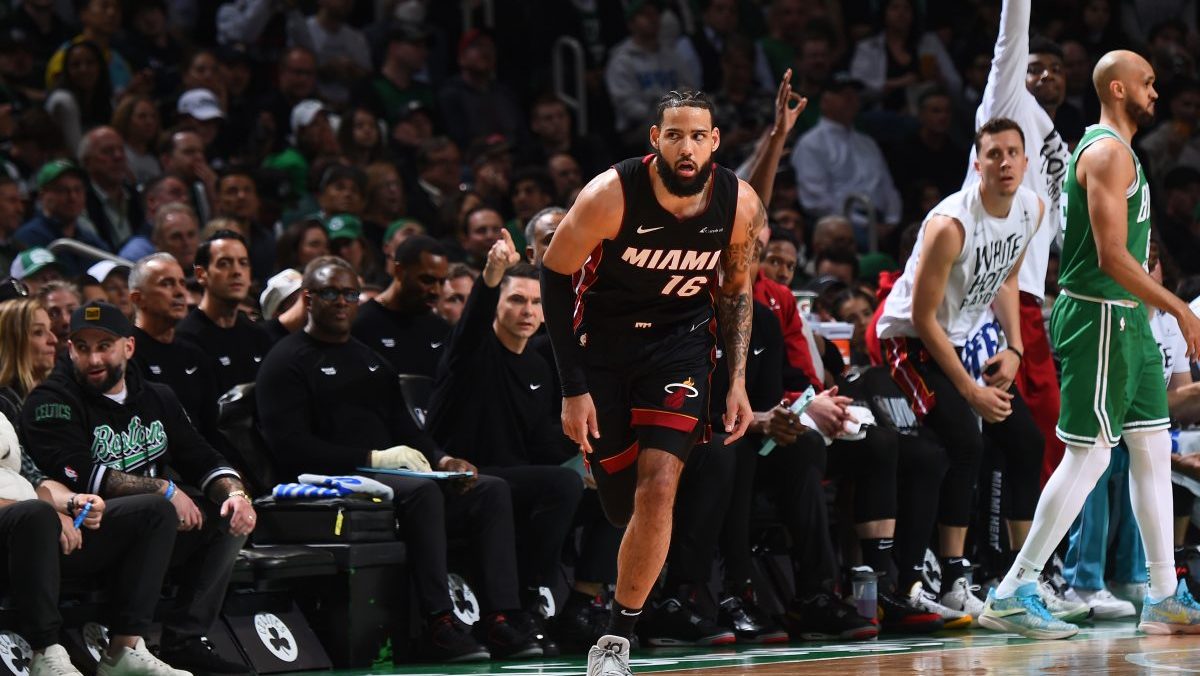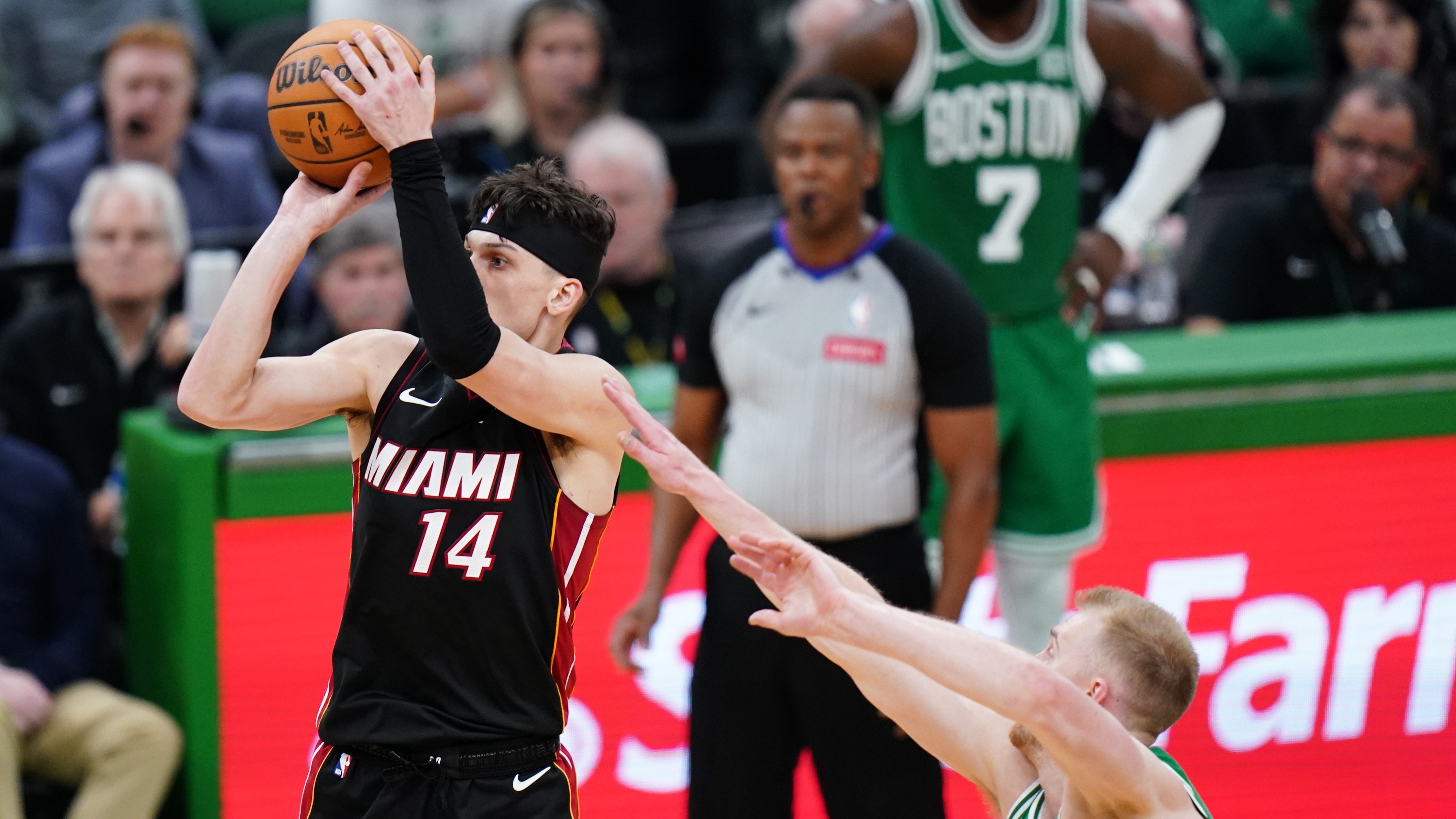There have been two versions of the Boston Celtics inside the bubble.
The first is a mismatch-seeking, rim-attacking group that operates with the offensive swagger of a title contender and plays with a matching intensity on the defensive end.
The second is an isolation-accepting, shot clock-bleeding crew that looks like the first group but with its memory card ejected, and that group too often lets its offensive woes impact its defensive energy.
Stay in the game with the latest updates on your beloved Boston sports teams! Sign up here for our All Access Daily newsletter.
What’s become clear after more than a month of playoff basketball is that the Celtics are the most talented team in the Eastern Conference, but their propensity to take their foot off the gas has again made their lives tougher than it probably should be. Boston is in the unenviable position of trying to claw its way out of a two-game hole against a gritty Miami team that more routinely plays with a championship swagger.
Blakely: When it comes to Herro, C's are left thinking 'What if?'
As the Celtics prepare for Wednesday's pivotal Game 4 and a chance to even this best-of-seven series, Boston must find a way to avoid the lulls that have made the team’s path to the NBA Finals that much more difficult to navigate.
Boston has owned a lead in the playoffs for a whopping 67 percent of the total floor time during its 14 games. That includes a trio of tilts in which the Celtics have not trailed, most notably Saturday’s Game 3 win over Miami.
Boston Celtics
The Celtics have actually led the Heat series for more than 111 of the 149 total minutes of game action, or 74.6 percent of the series. But lapses in Games 1 and 2 allowed the Heat to erased double-digit leads and escape with narrow victories.
What changed for Boston in Game 3? Gordon Hayward’s return certainly gave the team a boost, as did the fallout from the team’s Game 2 locker room flareup, which Marcus Smart described as “electrifying.” The Celtics, though, played harder, longer and it didn’t leave Miami enough time to rally all the way back when the Celtics eventually downshifted late.
Boston opened the game hellbent on attacking Miami and finishing near the rim. The Celtics' first four makes had an average distance of 6 inches with Boston’s perimeter players driving any time they saw Duncan Robinson’s No. 55 jersey in front of them as if it was a bullfighter holding a red cape.
Boston finished with 60 points in the paint (18.7 points higher than their playoff average). They shot 30 free throws (5.2 above their playoff average). The Celtics’ offensive rating of 117 was their highest of the series and their best since the opening round against Philadelphia.
The Celtics were simply in attack mode and must harness that the rest of the series, even if Miami continues to deploy its 2-3 zone designed to make Boston work harder to exploit mismatches and clog up driving lanes.
Celtics Talk Podcast: After Game 3 victory, are the Celtics winning this series versus Heat? | Listen & subscribe | Watch on YouTube
Drives were the lifeblood of Boston’s offense on Saturday night. In their Game 2 loss, the Celtics registered only 42 total drives and were 6-18 shooting off them for 21 points. In Game 3, that drive total shot to 58 and Boston made 11 of 21 attempts off them for a total of 30 points. That’s well above their playoff average of 45.3 drives and 25.1 points off drives per game.
Boston’s touch time tells the story of a more decisive team as well.
The Celtics typically average 3.31 seconds per touch this postseason, the second-highest total among all playoff teams (only Portland was higher at 3.42). But on Saturday night, Boston’s touch time plummeted to 2.89 seconds per touch.
“We wanted to really attack,” Celtics coach Brad Stevens said after Game 2. "If we're putting it on the floor, we want to get to the rim and make a play for ourselves or others.”
Forsberg's Celtics Mailbag: Playoff Gordon; Time for more Time Lord?
Kemba Walker had been one of Boston’s chief offenders in terms of taking the air out of the ball. His average time of possession ranked among the top 10 players this postseason, and the league’s tracking data also has him at a robust 5.19 dribbles per touch (higher than fellow high-possession guards like Damian Lillard and Luka Doncic). But all eight of Walker’s makes in Game 3 were either off catch-and-shoot situations or the product of decisive early attacking.
After a Miami miss early in the first quarter, Walker pushed the ball up the court. Noticing the Heat hadn’t set their defense, he quickly attacked Jae Crowder with a crossover dribble and muscled home a layup before help could arrive near the basket.
Jaylen Brown, who practically had to beg for the ball in Game 2, didn’t wait for touches to find him in the corner. He forced the issue, especially early when he got a matchup with Robinson that allowed him to drive from above the 3-point arc.
The Celtics carried that aggression over to the defensive end. Where, as Stevens noted, “If we're not pressuring the ball, defensively, we're waiting to be attacked, we stink. So might as well pressure and see if we can be good.”
It was Brown running out beyond the 3-point line to contest a Bam Adebayo catch that forced a turnover and one of three easy transition buckets in a row that Boston generated while stretching its lead back out after Miami crawled within 3 late in the second quarter.
"I realize that, just being out on the floor, there’s so many different ways I can affect the game -- with the ball in my hands, without the ball in my hands, it don’t really matter,” said Brown.
"I can assert myself whether the ball comes to me or not. Just being aggressive any time I catch it, being aggressive on defense, being an aggressive rebounder. And all that stuff adds up. I think it was, maybe, more of an emphasis on that for me in Game 3. And going forward it will be more of an emphasis for sure.”
The Heat can take solace in the fact that, even with Boston attacking more often, they still nearly rallied back into the game in the final minutes. Boston remains prone to getting complacent and the Celtics cannot keep taking their foot off the gas, especially with the opportunity to play for a title in front of them.
The eyeball test suggests that Boston is the more talented team in this series. But the most talented team doesn’t always win. It’s about harnessing that ability for long stretches. Boston simply hasn’t done that and Jimmy Butler made them pay for it early in the series.
The Celtics have to stay in attack mode on both ends of the court. They need to harness the energy they brought after being down 0-2.
"We’re still down 2-1, so there’s never time to relax in a series until it’s over with, and even more sense of urgency when you’re down,” said Jayson Tatum. "So, we’re still losing and we know that.”


